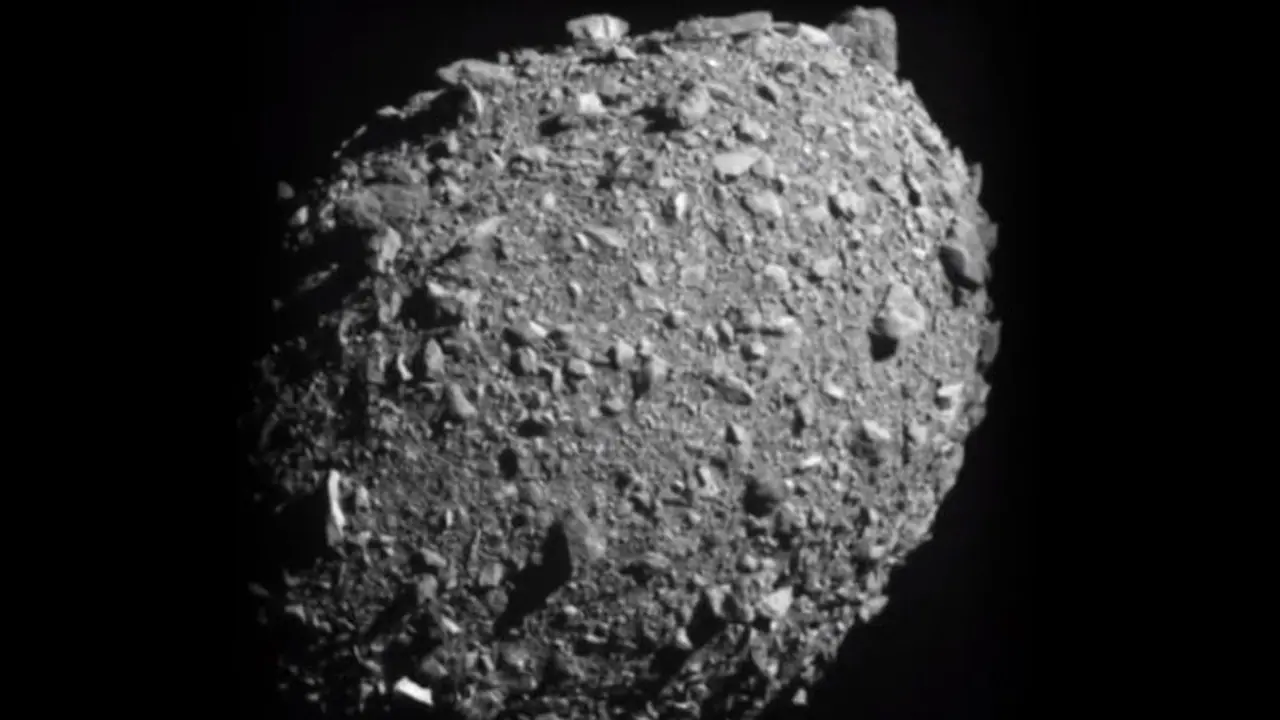The DART impactor struck its target, the space rock Dimorphos, at 7:14 pm Eastern Time (2314 GMT), ten months after blasting off from California on its pioneering mission. "We're entering a new era, one in which we may be able to protect ourselves from something like a dangerous hazardous asteroid impact," said Lori Glaze, director of NASA's planetary science division.

A NASA spacecraft collided with an asteroid at breakneck speed in an extraordinary practice run for the day when a rock threatened Earth on Monday (September 27).
The (Double Asteroid Redirection Test) DART spacecraft collided with an innocuous asteroid at 22,500 kph, causing a massive slam 9.6 million kilometres away.
The DART impactor hit its target, the space rock Dimorphos, at 7:14 pm Eastern Time (2314 GMT), ten months after blasting off from California on its pioneering mission.
"We're entering a new era, one in which we may be able to protect ourselves from something like a dangerous hazardous asteroid impact," said Lori Glaze, director of NASA's planetary science division.
The event was witnessed through telescopes pointing from Earth and space to the same location in the sky. The collision's primary goal was to alter the asteroid's orbit. According to AP, scientists expect the crash to create a crater and launch streams of boulders and dirt into space.
The USD 325 million mission was the first attempt in space to move any natural object.
On Monday, a 160-meter asteroid named Dimorphos will be the target. It is a moonlet of Didymos, a rapidly spinning and five times larger asteroid that means "twin" in Greek.
The DART spacecraft, developed by Johns Hopkins University's Applied Physics Laboratory and launched in November of last year, was the size of a vending machine. Engineers for missions yelled with joy.
A small satellite followed a few minutes later to photograph the collision. DART launched the Italian Cubesat two weeks ago.
Scientists insisted that the DART would not break dimorphous. The asteroid weighed approximately 5 billion kilogrammes, while the spacecraft weighed only 570 kilogrammes.
According to NASA, only about half of the 25,000 near-Earth objects in the lethal 140-metre range were discovered. Currently, less than 1 per cent of millions of smaller asteroids have the potential to cause widespread devastation.
Also Read: Russia, United States, China among the biggest contributors to waste in space: Study
Also Read: Jupiter will be closest to Earth in 70 years on September 26; All about it
Also Read: NASA, Google collaborate to allow users to track air pollution at local level
